Potrebujeme váš súhlas na využitie jednotlivých dát, aby sa vám okrem iného mohli ukazovať informácie týkajúce sa vašich záujmov. Súhlas udelíte kliknutím na tlačidlo „OK“.
ASTM E2714-13
Standard Test Method for Creep-Fatigue Testing
Automaticky preložený názov:
Štandardná skúšobná metóda pre Creep-únavovej skúšky
NORMA vydaná dňa 15.6.2013
Informácie o norme:
Označenie normy: ASTM E2714-13
Poznámka: NEPLATNÁ
Dátum vydania normy: 15.6.2013
Kód tovaru: NS-45913
Počet strán: 15
Približná hmotnosť: 45 g (0.10 libier)
Krajina: Americká technická norma
Kategória: Technické normy ASTM
Kategórie - podobné normy:
Anotácia textu normy ASTM E2714-13 :
Keywords:
crack formation, creep, creep-fatigue damage, cyclic deformation, early crack growth, fatigue, metallic materials, ICS Number Code 19.060 (Mechanical testing)
Doplňujúce informácie
| Significance and Use | ||||||||||||||||||||||||||||||||||||||||||||||||||||||
|
4.1 Creep-fatigue testing is typically performed at elevated temperatures and involves the sequential or simultaneous application of the loading conditions necessary to generate cyclic deformation/damage enhanced by creep deformation/damage or vice versa. Unless such tests are performed in vacuum or an inert environment, oxidation can also be responsible for important interaction effects relating to damage accumulation. The purpose of creep-fatigue tests can be to determine material property data for (a) assessment input data for the deformation and damage condition analysis of engineering structures operating at elevated temperatures 4.2 In every case, it is advisable to have complementary continuous cycling fatigue data (gathered at the same strain/loading rate) and creep data determined from test conducted as per Practice E139 for the same material and test temperature(s). The procedure is primarily concerned with the testing of round bar test specimens subjected (at least remotely) to uniaxial loading in either force or strain control. The focus of the procedure is on tests in which creep and fatigue deformation and damage is generated simultaneously within a given cycle. Data which may be determined from creep-fatigue tests performed under such conditions may characterize (a) cyclic stress-strain deformation response (b) cyclic creep (or relaxation) deformation response (c) cyclic hardening, cyclic softening response or (d) cycles to crack formation, or both. 4.3 While there are a number of testing Standards and Codes of Practice that cover the determination of low cycle fatigue deformation and cycles to crack initiation properties (See Practice E606, BS 7270: 2000, JIS Z 2279–1992, PrEN 3874, 1998, PrEN 3988–1998, ISO 12106–2003, ISO 12111–2005, and Practice E2368-04 and (1, 2, 3)7, some of which provide guidance for testing at high temperature (for example, Practice E606, ISO 12106–2003, and Practice E2368-04, there is no single standard which specifically prescribes a procedure for creep-fatigue testing. |
||||||||||||||||||||||||||||||||||||||||||||||||||||||
| 1. Scope | ||||||||||||||||||||||||||||||||||||||||||||||||||||||
|
1.1 This test method covers the determination of mechanical properties pertaining to creep-fatigue deformation or crack formation in nominally homogeneous materials, or both by the use of test specimens subjected to uniaxial forces under isothermal conditions. It concerns fatigue testing at strain rates or with cycles involving sufficiently long hold times to be responsible for the cyclic deformation response and cycles to crack formation to be affected by creep (and oxidation). It is intended as a test method for fatigue testing performed in support of such activities as materials research and development, mechanical design, process and quality control, product performance, and failure analysis. The cyclic conditions responsible for creep-fatigue deformation and cracking vary with material and with temperature for a given material. 1.2 The use of this test method is limited to specimens and does not cover testing of full-scale components, structures, or consumer products. 1.3 This test method is primarily aimed at providing the material properties required for assessment of defect-free engineering structures containing features that are subject to cyclic loading at temperatures that are sufficiently high to cause creep deformation. 1.4 This test method is applicable to the determination of deformation and crack formation or nucleation properties as a consequence of either constant-amplitude strain-controlled tests or constant-amplitude force-controlled tests. It is primarily concerned with the testing of round bar test specimens subjected to uniaxial loading in either force or strain control. The focus of the procedure is on tests in which creep and fatigue deformation and damage is generated simultaneously within a given cycle. It does not cover block cycle testing in which creep and fatigue damage is generated sequentially. Data that may be determined from creep-fatigue tests performed under conditions in which creep-fatigue deformation and damage is generated simultaneously include (a) cyclic stress- strain deformation response (b) cyclic creep (or relaxation) deformation response (c) cyclic hardening, cyclic softening response (d) cycles to formation of a single crack or multiple cracks in test specimens. 1.5 This test method is applicable
to temperatures and strain rates for which the magnitudes of
time-dependent inelastic strains (creep) are on the same order or
larger than time-independent inelastic strain.
1.6 The values stated in SI units
are to be regarded as standard. No other units of measurement are
included in this standard.
1.7 This standard does not purport to address all of the safety concerns, if any, associated with its use. It is the responsibility of the user of this standard to establish appropriate safety and health practices and determine the applicability of regulatory limitations prior to use. |
||||||||||||||||||||||||||||||||||||||||||||||||||||||
| 2. Referenced Documents | ||||||||||||||||||||||||||||||||||||||||||||||||||||||
|
Podobné normy:
Historická
15.5.2009
Historická
1.11.2010
Historická
1.6.2010
Historická
1.8.2014
Historická
15.11.2012
Historická
15.11.2012
Odporúčame:
Aktualizácia technických noriem
Chcete mať istotu, že používate len platné technické normy?
Ponúkame Vám riešenie, ktoré Vám zaistí mesačný prehľad o aktuálnosti noriem, ktoré používate.
Chcete vedieť viac informácií ? Pozrite sa na túto stránku.


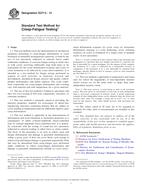
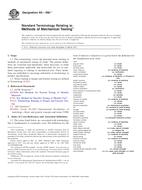 ASTM E6-09be1
ASTM E6-09be1 ASTM E739-10
ASTM E739-10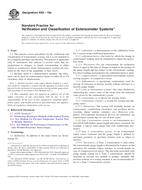 ASTM E83-10a
ASTM E83-10a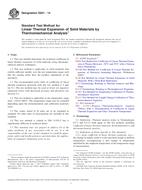 ASTM E831-14
ASTM E831-14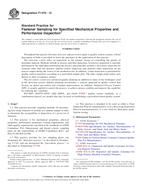 ASTM F1470-12
ASTM F1470-12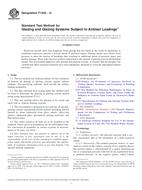 ASTM F1642-12
ASTM F1642-12
 Cookies
Cookies
